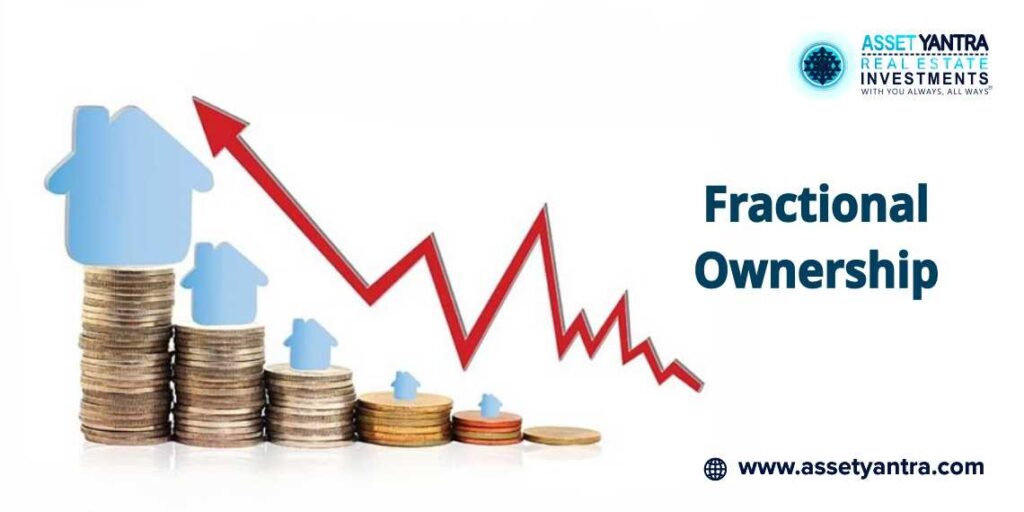The recent shift in the lifestyle of people after the pandemic has taught us that every conventional form of operation can be altered as per requirements. What it means is that, before the pandemic, most of the community was actively and passively making key decisions about their lives outside the cyber bubble or the internet. Most people across the world are probably drawn much closer to alternative investment options such as commercial real estate.
Similarly, investments and alternative investments have seen a change in the past couple of years. More and more people are being attracted to investment opportunities and alternative investments. Which seems to be a general trend in the developing countries of the world.
We’ll also cover the concept of fractional ownership and how it solves the difficulty faced by investors due to the high magnitude of required capital.
Let’s Begin!
What is fractional ownership?

Real estate investments are usually accompanied by the fact that they need a large amount of capital. But, what most of the new investors out there don’t know is that the concept of fractional ownership is something that can solve all difficulties for the required capital.
In Detail: Fractional Ownership: How this investment is unlocking real estate opportunities
Is Fractional Ownership solving the problem of capital challenges?
With fractional ownership, any keen investor can invest in alternative investments like real estate without the need to purchase all of the inventory that is being sold. The name itself suggests that potential investors can invest. Purchase a fraction of the actual property that is being offered.
Through this, the problem of fractional ownership is solved as the shortage in capital demand cannot be the deal breaker for an interested investor.
The future of fractional ownership in the Indian Commercial real estate sector:
“Investing in commercial real estate is getting more popular as a result of increased uncertainty in the stock market and lower yields on bonds and fixed deposits”. Retail investors may now invest lesser sums in India’s burgeoning commercial real estate industry thanks to fractional ownership, allowing them to diversify their income. “The future of fractional investing is bright and sustainable. As a result, retail investors have hopped on board to ride the surge of safe and stable returns. As well as broaden their investment portfolio”, adds Mohit Goel CEO of Omaxe Ltd.
Ashish Bhutani, The MD of Bhutani Infra, says that people can now purchase a fraction of a luxury office space, that was originally worth 90 crores. Moreover. They can become one of the rightful owners of that property and get returns of as much as 3% of their initial investment, let’s say 10 lakhs. And it will be very profitable for them to get even a small amount of 30K and be happy to see it grow even after!
“Fractional ownership ensures an increasing rate of return in the form of rental income and capital gain.”
Conclusion
If you’re looking for an alternative investment platform that will help you to make alternative investments in lucrative assets around the country. Then Asset Yantra is the right choice for you. And this platform has everything you need to give boost to your income through a variety of diverse assets.
Asset Yantra has the feature of fractional ownership. Which will let you be the owner of impressive properties around the major economic hubs of the country. Sign up now. And enjoy the benefits of having your portfolio of real estate investments.
Capital, A Challenge when Buying Commercial Real Estate: Here’s how Fractional Ownership solves this FAQs
Fractional ownership is an investment approach in which the cost of an asset is split between individual shareholders. The usage benefits that the fractional owners receive are comparable to those of timeshare owners.
The concept of fractional ownership in the Indian real estate market is still in its infancy, but it is expected to get valued at more than USD 5 billion. Fractional ownership is the future of the Indian real estate industry since it addresses an issue with commercial property: the high entry barrier of required investment.

